-
![[image]](https://www.balancer.ru/cache/sites/com/o0/o0bg/c/rf/image_1920w/Boston/2011-2020/2015/01/22/BostonGlobe.com/EditorialOpinion/Images/128x128-crop/TAKING_IN_THE_VIEW-251648.jpg)
ВМС США [вторая половина ХХ века и современность...2]
Теги:
NASSCO on Friday laid the keel for the future USS Robert E. Simanek (ESB-7) at its San Diego, Calif., shipyard.
“The ship is named for Private First Class Robert Ernest Simanek, who was awarded the Medal of Honor for shielding fellow Marines from a grenade at the Battle of Bunker Hill during the Korean War. The Medal of Honor was presented to him by President Dwight D. Eisenhower in a White House ceremony in 1953,” the service said in a news release.
Simanek, who was also awarded the Purple Heart, died in August at the age of 92, according to the Marines Corps Reserve.
“We are honored this ship will celebrate the late Robert E. Simanek’s legacy as a Medal of Honor recipient and Korean War veteran and his dedication to our country,” Tim Roberts, the program manager for strategic and theater sealift within the Program Executive Office Ships, said in the Navy news release. “ESBs provide a critical capability to the fleet and provide for increased flexibility.”
The hulls are based on the Alaska-class commercial oil tankers, which were also built at NASSCO. The first two built for the Navy – USNS Montford Point (ESD-1) and USNS John Glenn (ESD-2) – were planned for use as mobile landing platforms that would transfer vehicles from roll-on/roll-off logistics ships to landing craft at sea. The service plans to decommission the two original MLPs as part of the Fiscal Year 2023 budget submission.
USS Lewis B. Puller (ESB-3) was modified from the original Montford Point original design to serve as a platform for special operations and mine countermeasures forces. Puller has operated in U.S. Central Command since 2017. USS Woody Williams (ESB-4) has operated extensively in Europe and Africa, USNI News previously reported. USS Miguel Keith (ESB-5) deployed to the Western Pacific earlier this year. The most recent ESB, John L. Canley (ESB-6) is under construction.
“The ship is named for Private First Class Robert Ernest Simanek, who was awarded the Medal of Honor for shielding fellow Marines from a grenade at the Battle of Bunker Hill during the Korean War. The Medal of Honor was presented to him by President Dwight D. Eisenhower in a White House ceremony in 1953,” the service said in a news release.
Simanek, who was also awarded the Purple Heart, died in August at the age of 92, according to the Marines Corps Reserve.
“We are honored this ship will celebrate the late Robert E. Simanek’s legacy as a Medal of Honor recipient and Korean War veteran and his dedication to our country,” Tim Roberts, the program manager for strategic and theater sealift within the Program Executive Office Ships, said in the Navy news release. “ESBs provide a critical capability to the fleet and provide for increased flexibility.”
The hulls are based on the Alaska-class commercial oil tankers, which were also built at NASSCO. The first two built for the Navy – USNS Montford Point (ESD-1) and USNS John Glenn (ESD-2) – were planned for use as mobile landing platforms that would transfer vehicles from roll-on/roll-off logistics ships to landing craft at sea. The service plans to decommission the two original MLPs as part of the Fiscal Year 2023 budget submission.
USS Lewis B. Puller (ESB-3) was modified from the original Montford Point original design to serve as a platform for special operations and mine countermeasures forces. Puller has operated in U.S. Central Command since 2017. USS Woody Williams (ESB-4) has operated extensively in Europe and Africa, USNI News previously reported. USS Miguel Keith (ESB-5) deployed to the Western Pacific earlier this year. The most recent ESB, John L. Canley (ESB-6) is under construction.
Прикреплённые файлы:


Погрузка UGM-109 Tomahawk SLCM.
Прикреплённые файлы:


"Тем временем, в замке шефа..." ©

1) Подтверждается то, о чем уже говорилось - срок службы нескольких Огайо придется продлить, "так как Огайо на выходе, в то время как Колумбия на входе и вот это вот всё".
2) Первые четыре Огайо (те, которые уже давно ПЛАРК, а не ПЛАРБ) своеобразно поучаствуют в этом процессе (оценка износа кораблей при их разборке, деребан на запчасти опять же и т.п.).
3) Тихо подкрадывается условный Трайдент III, который ради соблюдения приличий именуют Трайдент II Life Extension II (просто Life Extension уже был). Конкретики по ракете, разумеется, никакой.

Navy Could Extend Life of Five Ohio-class Ballistic Missile Boats to Hedge Against Columbia Program Delays - USNI News
ARLINGTON, Va. – Five of the Navy’s oldest submarines are candidates for a three-year life extension, service officials said on Tuesday. The 18-month repair period would target the five Ohio-class nuclear ballistic missile submarines, or SSBNs, to support a requirement for the Navy to surge 10 boomers as a strategic nuclear contingency, program executive officer … // news.usni.org1) Подтверждается то, о чем уже говорилось - срок службы нескольких Огайо придется продлить, "так как Огайо на выходе, в то время как Колумбия на входе и вот это вот всё".
2) Первые четыре Огайо (те, которые уже давно ПЛАРК, а не ПЛАРБ) своеобразно поучаствуют в этом процессе (оценка износа кораблей при их разборке, деребан на запчасти опять же и т.п.).
3) Тихо подкрадывается условный Трайдент III, который ради соблюдения приличий именуют Трайдент II Life Extension II (просто Life Extension уже был). Конкретики по ракете, разумеется, никакой.


Г.М.> Navy Could Extend Life of Five Ohio-class Ballistic Missile Boats to Hedge Against Columbia Program Delays - USNI News
Хм, как интересно, на 3 года, получается до 45,5 лет. Пока абсолютный рекорд по службе ПЛА.
Ну и в догонку-они хотят заказать одним контрактом 5 Колумбий. Одним как пишут блоком на 3-7-й корпуса.

Хм, как интересно, на 3 года, получается до 45,5 лет. Пока абсолютный рекорд по службе ПЛА.
Ну и в догонку-они хотят заказать одним контрактом 5 Колумбий. Одним как пишут блоком на 3-7-й корпуса.

Navy Could Extend Life of Five Ohio-class Ballistic Missile Boats to Hedge Against Columbia Program Delays - USNI News
ARLINGTON, Va. – Five of the Navy’s oldest submarines are candidates for a three-year life extension, service officials said on Tuesday. The 18-month repair period would target the five Ohio-class nuclear ballistic missile submarines, or SSBNs, to support a requirement for the Navy to surge 10 boomers as a strategic nuclear contingency, program executive officer … // news.usni.org

R.!> Ну и в догонку-они хотят заказать одним контрактом 5 Колумбий. Одним как пишут блоком на 3-7-й корпуса.
Да, тут еще Ермаков разразился кратким обзором по теме:

Да, тут еще Ермаков разразился кратким обзором по теме:

Ядерный буревестник Максим
А вот будущее стратегических подводных ракетоносцев беспокоит американский флот куда больше. В первую очередь вызывает опасения потенциальный кризис начала 2030-х годов, когда из-за начала списания лодок типа «Ohio» и поступления новых типа «Columbia» меньшими темпами, при малейшей задержке или незапланированном выходе из строя какой-либо лодки количество боеготовых просядет меньше минимально допустимых 10. Зная американцев на этот случай может даже закон есть, по крайней мере минимальное количество авианосцев лимитируется законодательно. Конечно, в этом совершенно очевидно читается опасение задержек с вводом в строй «Columbia», хотя откровенно это произносить пока не очень принято – по плану первое боевое патрулирование SSBN-826 «District of Columbia» все еще в октябре 2030 года. Впрочем, даже если оно формально случится (что конечно будет чудом – оборонные программы всегда сдвигаются, а тут еще ковид был), реальный ее ввод в строй, и ввод в строй ее сестер, может оказаться со значительными задержками. Для предотвращения этого сейчас вырабатывают целый ряд мер — наём на верфи огромного количества новых рабочих и взятие их обучения на госконтроль (для всего судостроения требуется чуть ли не 10 тыс. рабочих ежегодно!), «оптовая» покупка пяти лодок типа «Columbia» (с 3 по 7), что позволит судостроителю заранее и дешевле заготавливать материалы, изменить бизнес-процессы при строительстве, что может дать до полугода выигрыша, расширить доступность технического обслуживания лодок путем строительства новой верфи. Однако главным решением, которое вероятно и будет принято, будет продление срока службы лодок типа «Ohio». Пока говорится о том, что за счет дополнительного 18-ти месячного обслуживания можно будет дать дополнительно три года службы — выглядит не очень эффективно, но может дать возможность проскочить именно опасный период. Этой операции могут подвергнуться до пяти лодок. Решать делать это или нет надо до 2026 года, когда дополнительного ремонта первой из этих лодок, SSBN-732 «Alaska» нужно будет закупать материалы и планировать место на верфи. На выбор возможно повлияет техническое состояние самых старых лодок типа «Ohio», переоборудованных в носители «Томагавков», которых как раз будут списывать в это время, но тут очевидно, что скорее всего придется выдавать нужду за добродетель. Подобное же вероятно ожидает несколько многоцелевых лодок типа «Los Angeles». Следующий кризис ожидают во второй половине 2030-х и связан он будет с интенсивными параллельными испытаниям на обоих типах ракетоносцев новой модификации БРПЛ Trident D5 — Life Extension II с новым боевым блоком и компонентами, что потребует постоянно отвлекать от боевой службы как минимум одну-две лодки. Американцы конечно сами себе буратины, что затянули обновление триады до критического физического износа прошлых компонентов. Но с другой стороны, сейчас под шумок противостояния с Китаем и Россией, военные сумеют выбить дополнительно финансирование по поводу чего и эти крокодиловы слезы. // t.me

Navy Expanding Attack Submarine Presence on Guam
Amid strategic competition with China, the United States plans to augment its ability to operate submarines out of Guam, the commander of U.S. submarine forces in the Pacific said today.
After sending Los Angeles-class nuclear attack submarine USS Springfield (SSN-761) to Guam earlier this year, the Navy will spend the next five to 10 years building out both its maintenance capacity and training capabilities on the U.S. territory.
“Looking to the future, we are going to expand our submarine operating capability from Guam to optimize our presence and warfighting capacity in the Western Pacific,” Rear Adm. Jeffrey Jablon, the commander of Submarine Force, U.S. Pacific Fleet, said Wednesday at the Naval Submarine League’s annual symposium.
“This is going to include augmenting our maintenance capacity with the necessary facilities, infrastructure and personnel; building additional pier facilities and services; and expanding the capabilities of our shore-based training facilities in Guam,” he added.
That timeline to expand submarine capacity and capabilities out of the U.S. island territory corresponds with what Jablon described as the “decade of maximum danger,” as it relates to China’s desire to reunify Taiwan with the mainland.
“And that specifically refers to the [People’s Republic of China]. You know, we’ve heard we’re at an inflection point. It’s a critical decade. It’s a decisive decade. And it’s true. That is my number one concern as the Pacific Fleet force commander for the submarine force. We are in the decade of maximum danger,” Jablon said.
“China has fielded the largest navy in the world, guaranteeing its numerical advantage in the south and east China Seas. And as the [People’s Liberation Army Navy] surface fleet and undersea force improves their capabilities, we will intensify our efforts to prepare our undersea force to deter, and if necessary, defeat the PLAN.”
After forward-deploying Springfield to Guam, the U.S. Navy now has five attack boats operating from the island. Both of the Navy’s submarine tenders – USS Frank Cable (AS-40) and USS Emory S. Land (AS-39) – are also stationed in Guam.
Jablon pointed to a rearming and reloading exercise that Frank Cable performed earlier this year in Australia with Springfield and Royal Australian Navy Collins-class attack boat HMAS Farncomb (SSG-74) as an example of the U.S. Navy’s undersea capability in the region.
The admiral said he expects to have a replacement for the 1970s-era submarine tenders by the late 2020s.
“Both the Emory S. Land and the Frank Cable will be in operation until that tender turnover, so there will not be a gap in our tender capabilities,” he said.
Jablon also pointed to Ohio-class ballistic missile submarine USS Nevada’s (SSBN-733) visit to Guam at the start of this year.
Amid strategic competition with China, the United States plans to augment its ability to operate submarines out of Guam, the commander of U.S. submarine forces in the Pacific said today.
After sending Los Angeles-class nuclear attack submarine USS Springfield (SSN-761) to Guam earlier this year, the Navy will spend the next five to 10 years building out both its maintenance capacity and training capabilities on the U.S. territory.
“Looking to the future, we are going to expand our submarine operating capability from Guam to optimize our presence and warfighting capacity in the Western Pacific,” Rear Adm. Jeffrey Jablon, the commander of Submarine Force, U.S. Pacific Fleet, said Wednesday at the Naval Submarine League’s annual symposium.
“This is going to include augmenting our maintenance capacity with the necessary facilities, infrastructure and personnel; building additional pier facilities and services; and expanding the capabilities of our shore-based training facilities in Guam,” he added.
That timeline to expand submarine capacity and capabilities out of the U.S. island territory corresponds with what Jablon described as the “decade of maximum danger,” as it relates to China’s desire to reunify Taiwan with the mainland.
“And that specifically refers to the [People’s Republic of China]. You know, we’ve heard we’re at an inflection point. It’s a critical decade. It’s a decisive decade. And it’s true. That is my number one concern as the Pacific Fleet force commander for the submarine force. We are in the decade of maximum danger,” Jablon said.
“China has fielded the largest navy in the world, guaranteeing its numerical advantage in the south and east China Seas. And as the [People’s Liberation Army Navy] surface fleet and undersea force improves their capabilities, we will intensify our efforts to prepare our undersea force to deter, and if necessary, defeat the PLAN.”
After forward-deploying Springfield to Guam, the U.S. Navy now has five attack boats operating from the island. Both of the Navy’s submarine tenders – USS Frank Cable (AS-40) and USS Emory S. Land (AS-39) – are also stationed in Guam.
Jablon pointed to a rearming and reloading exercise that Frank Cable performed earlier this year in Australia with Springfield and Royal Australian Navy Collins-class attack boat HMAS Farncomb (SSG-74) as an example of the U.S. Navy’s undersea capability in the region.
The admiral said he expects to have a replacement for the 1970s-era submarine tenders by the late 2020s.
“Both the Emory S. Land and the Frank Cable will be in operation until that tender turnover, so there will not be a gap in our tender capabilities,” he said.
Jablon also pointed to Ohio-class ballistic missile submarine USS Nevada’s (SSBN-733) visit to Guam at the start of this year.
Прикреплённые файлы:


USS George H.W. Bush (CVN 77) is seen pierside at the NATO Marathi Pier Complex in Souda Bay, Crete, during a scheduled port visit, Oct. 9, 2022. The George H.W. Bush Carrier Strike Group is on a scheduled deployment.
Прикреплённые файлы:


U.S. Navy Details Hypersonic Missile Plan for Zumwalt Destroyers, Virginia Submarines
The trio of Zumwalt-class guided-missile destroyers could each field up to a dozen hypersonic missiles, with the first ship ready for testing in 2025, USNI News has learned.
The service has determined that the hull can accommodate four 87-inch missile tubes that can each hold multiple missiles, Vice Adm. Johnny Wolfe the head of the Navy’s strategic systems programs, told reporters on Tuesday at the Naval Submarine League’s annual symposium.
“We’re talking about deploying this system on DDG-1000 in 2025, that’s three years from now,” Wolfe said.
“We got to get on with getting all of the design for the Zumwalt, getting all of those tubes in there, as we pulled out the forward gun mounts. We’ve gotten to put these large diameter tubes in there, and then finish the integration work into the combat system.”
USS Zumwalt (DDG-1000) is set to arrive at Ingalls Shipbuilding in Pascagoula, Miss., late next year to start a modernization period to install the missile tubes that will replace the two existing 155mm gun mounts on the 16,000-ton guided-missile destroyer.
USNI News understands the Navy has determined in previous studies that three Common Hypersonic Glide Bodies (C-HGB) and their boosters could fit in each 87-inch tube – or 12 missiles per Zumwalt.
USS Michael Monsoor (DDG-1001) will follow Zumwalt to Ingalls for its own modernization period that will include installing the missile tubes. It’s unclear if the third Zumwalt-class ship, USS Lyndon B. Johnson (DDG-1002) – currently at Ingalls – will also have the missiles installed as part of its combat systems activation period.
The inclusion of hypersonics on the ship followed a 2017 decision to make the three-ship Zumwalt class blue water combatants.
“Zumwalt gave us an opportunity to get [hypersonics] out faster and to be honest with you, I need a solid mission for Zumwalt,” Chief of Naval Operations Adm. Mike Gilday told USNI News during an interview earlier this year.
The weapon’s dimensions are common across the Navy and Army and have been developed as part of a joint program between both services.
“You need to have the same lethality no matter where you’re at. And that’s what this weapon does. It’s all the same with the lethality to get after all these targets. It just depends on who’s launching it, right, whether it’s the Army, from a [transporter erector launcher], or whether it’s a Zumwalt, or whether it’s a Virginia-class submarine,” Wolfe said.
The Pentagon over the last several years has accelerated its development of hypersonic weapons, or those traveling faster than five times the speed of sound. In 2018, the Defense Department tasked the Navy with developing a weapon for itself and the Army.
“On these high-end systems, it is no longer affordable for a single service to do that. We’re working with the [Office the Secretary of Defense], we’re working with the Army and with what our resource sponsor is doing to figure out how we build this capability once and get out to multiple platforms,” Wolfe said.
The Navy is pairing a glide body launched from a booster system to create an “all-up round” that would be in use by both services. In June, the first flight test proved the viability of the booster but the glide body didn’t hit the target.
“It’s strategic, but it’s not nuclear. If you look at the numbers, particularly with what we’re going to with the ranges, it is very much a strategic asset. You can hold very high-value targets at risk … and you can do that with all these various platforms,” Wolfe said.
The Zumwalt destroyers will be the first Navy platform to field the missiles. The Army is set to get its first operational, truck-launched weapons next year. In 2029, the weapons will be deployed on the first attack submarine with the Virginia Payload Module that is currently under construction at General Dynamics Electric Boat and HII’s Newport News Shipbuilding.
The Navy is currently building a test facility to launch the new weapon underwater from a similar tube as those installed on the Zumwalt ships and the Virginia boats, Wolfe said.
The trio of Zumwalt-class guided-missile destroyers could each field up to a dozen hypersonic missiles, with the first ship ready for testing in 2025, USNI News has learned.
The service has determined that the hull can accommodate four 87-inch missile tubes that can each hold multiple missiles, Vice Adm. Johnny Wolfe the head of the Navy’s strategic systems programs, told reporters on Tuesday at the Naval Submarine League’s annual symposium.
“We’re talking about deploying this system on DDG-1000 in 2025, that’s three years from now,” Wolfe said.
“We got to get on with getting all of the design for the Zumwalt, getting all of those tubes in there, as we pulled out the forward gun mounts. We’ve gotten to put these large diameter tubes in there, and then finish the integration work into the combat system.”
USS Zumwalt (DDG-1000) is set to arrive at Ingalls Shipbuilding in Pascagoula, Miss., late next year to start a modernization period to install the missile tubes that will replace the two existing 155mm gun mounts on the 16,000-ton guided-missile destroyer.
USNI News understands the Navy has determined in previous studies that three Common Hypersonic Glide Bodies (C-HGB) and their boosters could fit in each 87-inch tube – or 12 missiles per Zumwalt.
USS Michael Monsoor (DDG-1001) will follow Zumwalt to Ingalls for its own modernization period that will include installing the missile tubes. It’s unclear if the third Zumwalt-class ship, USS Lyndon B. Johnson (DDG-1002) – currently at Ingalls – will also have the missiles installed as part of its combat systems activation period.
The inclusion of hypersonics on the ship followed a 2017 decision to make the three-ship Zumwalt class blue water combatants.
“Zumwalt gave us an opportunity to get [hypersonics] out faster and to be honest with you, I need a solid mission for Zumwalt,” Chief of Naval Operations Adm. Mike Gilday told USNI News during an interview earlier this year.
The weapon’s dimensions are common across the Navy and Army and have been developed as part of a joint program between both services.
“You need to have the same lethality no matter where you’re at. And that’s what this weapon does. It’s all the same with the lethality to get after all these targets. It just depends on who’s launching it, right, whether it’s the Army, from a [transporter erector launcher], or whether it’s a Zumwalt, or whether it’s a Virginia-class submarine,” Wolfe said.
The Pentagon over the last several years has accelerated its development of hypersonic weapons, or those traveling faster than five times the speed of sound. In 2018, the Defense Department tasked the Navy with developing a weapon for itself and the Army.
“On these high-end systems, it is no longer affordable for a single service to do that. We’re working with the [Office the Secretary of Defense], we’re working with the Army and with what our resource sponsor is doing to figure out how we build this capability once and get out to multiple platforms,” Wolfe said.
The Navy is pairing a glide body launched from a booster system to create an “all-up round” that would be in use by both services. In June, the first flight test proved the viability of the booster but the glide body didn’t hit the target.
“It’s strategic, but it’s not nuclear. If you look at the numbers, particularly with what we’re going to with the ranges, it is very much a strategic asset. You can hold very high-value targets at risk … and you can do that with all these various platforms,” Wolfe said.
The Zumwalt destroyers will be the first Navy platform to field the missiles. The Army is set to get its first operational, truck-launched weapons next year. In 2029, the weapons will be deployed on the first attack submarine with the Virginia Payload Module that is currently under construction at General Dynamics Electric Boat and HII’s Newport News Shipbuilding.
The Navy is currently building a test facility to launch the new weapon underwater from a similar tube as those installed on the Zumwalt ships and the Virginia boats, Wolfe said.
Прикреплённые файлы:


Очередной Лос-Анджелес вернулся с последней боевой службы- SSN-721 Чикаго. 5-й завершающий службу корабль 2-й серии. SSN-722 Ки Вест судя по инфе тоже сейчас на самой последней боевой службе, которая закончится до конца года.

722-я недавно в Корею зашла в рамках последней БС.

USS Chicago Returns Home from Final Deployment
It was the submarine’s final deployment before decommissioning, which is scheduled to begin in 2023 following 37 years of service. // www.cpf.navy.mil722-я недавно в Корею зашла в рамках последней БС.
USS KEY WEST SSN722 arrived at Busan ROK 31 Oct, visiting Korea while on a western Pacific deployment. It's likely the last cruise for the Los Angeles-class attack #submarine, schleduled for inactivation during fiscal 2023 pic.twitter.com/KQB4IXxkF1
— Chris Cavas (@CavasShips) November 2, 2022


Seafang-45> The trio of Zumwalt-class guided-missile destroyers could each field up to a dozen hypersonic missiles, with the first ship ready for testing in 2025, USNI News has learned.
DAKKA-DAKKA одним словом...
DAKKA-DAKKA одним словом...


Seafang-45> U.S. Navy Details Hypersonic Missile Plan for Zumwalt Destroyers, Virginia Submarines
Есть также новость на русском языке
https://flot.com/2022/%D0%A1%D1%88%D0%B0222/
Американский головной эсминец класса "Зумвальт" будет готов к испытаниям новых ракет с гиперзвуковым планирующим блоком C-HGB (Common Hypersonic Glide Body) в 2025 году. Об этом сообщает USNI News со ссылкой на представителей ВМС США.
Как рассказал изданию руководитель программы стратегических систем ВМС США вице-адмирал Джонни Вулф, на данный момент определено, что корпус самого современного американского корабля позволяет разместить четыре 87-дюймовые ячейки вертикального пуска, каждая из которых сможет вместить три ракеты C-HGB. Таким образом, один эсминец сможет нести 12 гиперзвуковых зарядов.
По его словам, "Зумвальт" должен прибыть на верфь Ingalls Shipbuilding в Паскагуле (штат Миссисипи) в конце 2023 года для модернизации, которая включает демонтаж двух 155-мм артиллерийских комплексов и интеграцию установки вертикального пуска для C-HGB.
Второй эсминец данного класса, "Майкл Мансур", позднее пройдет аналогичную модернизацию. Пока неизвестно, какая судьба ждет третий корабль серии, "Линдон Джонсон", который пока готовят к передаче американскому флоту.
Как отмечает USNI News, гиперзвуковые ракеты считаются обычным вооружением, но вице-адмирал Вулф курирует стратегическое направление во флоте. Он также отвечает и за оснащение ядерным оружием подлодок США.
"Это стратегическое, но не ядерное оружие, – пояснил он изданию предназначение C-HGB. – Если вы посмотрите на характеристики перспективной системы, то это во многом стратегический актив. Мы сможем угрожать очень важным целям противника".
Разработка C-HGB идет совместными усилиями ВМС и Армии США в рамках программы CPS (Conventional Prompt Strike, неядерный быстрый удар). Предполагается создание двухступенчатой ракеты-носителя диаметром 87,6 см, которая будет нести планирующий блок. Ракета-носитель поднимет планер и разгонит его до гиперзвуковой скорости. Затем уже аппарат отстыкуется от носителя и сможет планировать к цели.
Эсминцы типа "Зумвальт" станут первой платформой ВМС США, на которой установят ракеты C-HGB. Затем, в 2029 году, это гиперзвуковое оружие должны развернуть на многоцелевой атомной подлодке класса "Вирджиния".
По словам вице-адмирала Вулфа, сейчас ВМС строят испытательную установку для запуска нового боеприпаса из вертикальной ячейки аналогичной той, которую установят на эсминцах "Зумвальт" и субмаринах "Вирджиния".
Есть также новость на русском языке
https://flot.com/2022/%D0%A1%D1%88%D0%B0222/
Американский головной эсминец класса "Зумвальт" будет готов к испытаниям новых ракет с гиперзвуковым планирующим блоком C-HGB (Common Hypersonic Glide Body) в 2025 году. Об этом сообщает USNI News со ссылкой на представителей ВМС США.
Как рассказал изданию руководитель программы стратегических систем ВМС США вице-адмирал Джонни Вулф, на данный момент определено, что корпус самого современного американского корабля позволяет разместить четыре 87-дюймовые ячейки вертикального пуска, каждая из которых сможет вместить три ракеты C-HGB. Таким образом, один эсминец сможет нести 12 гиперзвуковых зарядов.
По его словам, "Зумвальт" должен прибыть на верфь Ingalls Shipbuilding в Паскагуле (штат Миссисипи) в конце 2023 года для модернизации, которая включает демонтаж двух 155-мм артиллерийских комплексов и интеграцию установки вертикального пуска для C-HGB.
Второй эсминец данного класса, "Майкл Мансур", позднее пройдет аналогичную модернизацию. Пока неизвестно, какая судьба ждет третий корабль серии, "Линдон Джонсон", который пока готовят к передаче американскому флоту.
Как отмечает USNI News, гиперзвуковые ракеты считаются обычным вооружением, но вице-адмирал Вулф курирует стратегическое направление во флоте. Он также отвечает и за оснащение ядерным оружием подлодок США.
"Это стратегическое, но не ядерное оружие, – пояснил он изданию предназначение C-HGB. – Если вы посмотрите на характеристики перспективной системы, то это во многом стратегический актив. Мы сможем угрожать очень важным целям противника".
Разработка C-HGB идет совместными усилиями ВМС и Армии США в рамках программы CPS (Conventional Prompt Strike, неядерный быстрый удар). Предполагается создание двухступенчатой ракеты-носителя диаметром 87,6 см, которая будет нести планирующий блок. Ракета-носитель поднимет планер и разгонит его до гиперзвуковой скорости. Затем уже аппарат отстыкуется от носителя и сможет планировать к цели.
Эсминцы типа "Зумвальт" станут первой платформой ВМС США, на которой установят ракеты C-HGB. Затем, в 2029 году, это гиперзвуковое оружие должны развернуть на многоцелевой атомной подлодке класса "Вирджиния".
По словам вице-адмирала Вулфа, сейчас ВМС строят испытательную установку для запуска нового боеприпаса из вертикальной ячейки аналогичной той, которую установят на эсминцах "Зумвальт" и субмаринах "Вирджиния".


Ford Carrier Strike Group Teams with Atlantic Allies in Silent Wolverine Exercise
The Gerald R. Ford Carrier Strike Group joined six allies in the eastern Atlantic on Tuesday to begin exercise Silent Wolverine, the Pentagon announced Tuesday.
The Ford CSG joined ships from Canada, Denmark, Germany, Spain, France and the Netherlands for the drills, which will test the countries’ interoperability and interchangeability with each other, a Navy spokesperson told USNI News.
The strike group participants include USS Gerald R. Ford (CVN-78), USS Normandy (CG-60), USS McFaul (DDG-74) and USS Thomas Hudner (DDG-116), the Navy spokesperson said.
It will be the first time that the U.S. will test Ford’s ability to work with the other countries joining the exercise, the spokesperson said.
Silent Wolverine will also help train for NATO deterrence, Pentagon Press Secretary Brig. Gen. Patrick Ryder said Tuesday.
“Silent Wolverine demonstrates the U.S. commitment to supporting regional stability and security through seamless interchangeability amongst participating NATO allies,” he said.
The following ships will participate in the exercise, which is slated to last until Nov. 14:
Canada
HMCS Montréal (FFH-336)
Denmark
HDMS Peter Willemoes (F362)
Germany
FGS Hessen (F 221)
Spain
ESPS Álvaro de Bazán (F101)
France
FS Chevalier Paul (D 621)
The Netherlands
HNLMS De Zeven Provinciën (F802)
HNLMS Van Amstel (F831)
Ford made a port call in Halifax, Nova Scotia, on Nov. 1. It is expected to make a port call in Portsmouth, England, according to U.K. Defence Journal.
The strike group left Naval Station Norfolk, Va., on Oct. 4 for two months of operations in the Atlantic.
The U.S. has expanded its carrier presence in Europe since December when the Pentagon tasked the Harry S. Truman Carrier Strike Group to take up station in the Mediterranian Sea.
The Gerald R. Ford Carrier Strike Group joined six allies in the eastern Atlantic on Tuesday to begin exercise Silent Wolverine, the Pentagon announced Tuesday.
The Ford CSG joined ships from Canada, Denmark, Germany, Spain, France and the Netherlands for the drills, which will test the countries’ interoperability and interchangeability with each other, a Navy spokesperson told USNI News.
The strike group participants include USS Gerald R. Ford (CVN-78), USS Normandy (CG-60), USS McFaul (DDG-74) and USS Thomas Hudner (DDG-116), the Navy spokesperson said.
It will be the first time that the U.S. will test Ford’s ability to work with the other countries joining the exercise, the spokesperson said.
Silent Wolverine will also help train for NATO deterrence, Pentagon Press Secretary Brig. Gen. Patrick Ryder said Tuesday.
“Silent Wolverine demonstrates the U.S. commitment to supporting regional stability and security through seamless interchangeability amongst participating NATO allies,” he said.
The following ships will participate in the exercise, which is slated to last until Nov. 14:
Canada
HMCS Montréal (FFH-336)
Denmark
HDMS Peter Willemoes (F362)
Germany
FGS Hessen (F 221)
Spain
ESPS Álvaro de Bazán (F101)
France
FS Chevalier Paul (D 621)
The Netherlands
HNLMS De Zeven Provinciën (F802)
HNLMS Van Amstel (F831)
Ford made a port call in Halifax, Nova Scotia, on Nov. 1. It is expected to make a port call in Portsmouth, England, according to U.K. Defence Journal.
The strike group left Naval Station Norfolk, Va., on Oct. 4 for two months of operations in the Atlantic.
The U.S. has expanded its carrier presence in Europe since December when the Pentagon tasked the Harry S. Truman Carrier Strike Group to take up station in the Mediterranian Sea.
Прикреплённые файлы:


Эсминец USS "Jason Dunham" DDG-109 ВМС США. Атлантический океан. 09.06.2022 г. (1)
Прикреплённые файлы:


Эсминец USS "Jason Dunham" DDG-109 ВМС США. Атлантический океан. 09.06.2022 г. (2)


Эсминец USS "Jason Dunham" DDG-109 ВМС США. Атлантический океан. 09.06.2022 г. (3)


Эсминец USS "Jason Dunham" DDG-109 ВМС США. Атлантический океан. 09.06.2022 г. (4)


Эсминец USS "Jason Dunham" DDG-109 ВМС США. Атлантический океан. 09.06.2022 г. (5)


Эсминец USS "Jason Dunham" DDG-109 ВМС США. Атлантический океан. 09.06.2022 г. (6)
Прикреплённые файлы:


Эсминец USS "Jason Dunham" DDG-109 ВМС США. Атлантический океан. 09.06.2022 г. (7)
Прикреплённые файлы:


Ох лять....
Предполагаемая цена перспективного эсминца-3,4 млрд. нерублей за единицу;
Предполагаемая цена перспективного многоцелевика-7,2 (!!!!!) млрд. нерублей за единицу.
Что там можно сделать за такие деньги я вообще с трудом представляю по крайней мере на ПЛА. Предполагается, что энное число эсминцев будет в строю к 2042-му году, многоцелевики судя по графику более дальняя перспектива.

Предполагаемая цена перспективного эсминца-3,4 млрд. нерублей за единицу;
Предполагаемая цена перспективного многоцелевика-7,2 (!!!!!) млрд. нерублей за единицу.
Что там можно сделать за такие деньги я вообще с трудом представляю по крайней мере на ПЛА. Предполагается, что энное число эсминцев будет в строю к 2042-му году, многоцелевики судя по графику более дальняя перспектива.

DDG(X) Destroyer Could Cost Up to $3.4B a Hull, SSN(X) Attack Boat Up to $7.2B, Says CBO Report - USNI News
The Navy’s next-generation guided-missile destroyer could cost up to $3.4 billion a ship, while its next-generation SSN(X) attack boat could cost up to $7.2 billion – figures that are billions over the service’s own estimates, according to the Congressional Budget Office’s annual analysis of the Navy’s long-range shipbuilding plan. The procurement of both SSN(X) and … // news.usni.org
Прикреплённые файлы:


Повреждения "Старка" после пары "экзосетов".
Прикреплённые файлы:


Вованыч>> Помню времена, когда "Си Вульф" стоила менее 2 млрд ))
R.!> И когда это казалось чем-то астрономическим...
Понятно, что "аппетиты растут", но и инфляцию тоже учитывать надо. Сегодняшний бакс это, грубо говоря, лишь этак половина бакса середины 90-х. В принципе, можно найти онлайн-калькулятор инфляции и посчитать точнее...
R.!> И когда это казалось чем-то астрономическим...
Понятно, что "аппетиты растут", но и инфляцию тоже учитывать надо. Сегодняшний бакс это, грубо говоря, лишь этак половина бакса середины 90-х. В принципе, можно найти онлайн-калькулятор инфляции и посчитать точнее...


Г.М.> Понятно, что "аппетиты растут", но и инфляцию тоже учитывать надо. Сегодняшний бакс это, грубо говоря, лишь этак половина бакса середины 90-х. В принципе, можно найти онлайн-калькулятор инфляции и посчитать точнее...
Есть такое, 1 товарищ например скидывал калькулятор, где можно прикинуть курс сегодняшнего доллара, к прошлым значениям. Получилось, что 2 млрд. нерублей 1990-го года= 4,375 млрд. нерублей по сегодняшнему курсу.

Есть такое, 1 товарищ например скидывал калькулятор, где можно прикинуть курс сегодняшнего доллара, к прошлым значениям. Получилось, что 2 млрд. нерублей 1990-го года= 4,375 млрд. нерублей по сегодняшнему курсу.

Inflation Calculator
Free inflation calculator that runs on U.S. CPI data or a custom inflation rate. Also, find the historical U.S. inflation data and learn more about inflation. // www.calculator.net
Прикреплённые файлы:


Copyright © Balancer 1997..2024
Создано 08.08.2002
Связь с владельцами и администрацией сайта: anonisimov@gmail.com, rwasp1957@yandex.ru и admin@balancer.ru.
Создано 08.08.2002
Связь с владельцами и администрацией сайта: anonisimov@gmail.com, rwasp1957@yandex.ru и admin@balancer.ru.
 Seafang-45
Seafang-45

 инфо
инфо инструменты
инструменты Zorro
Zorro

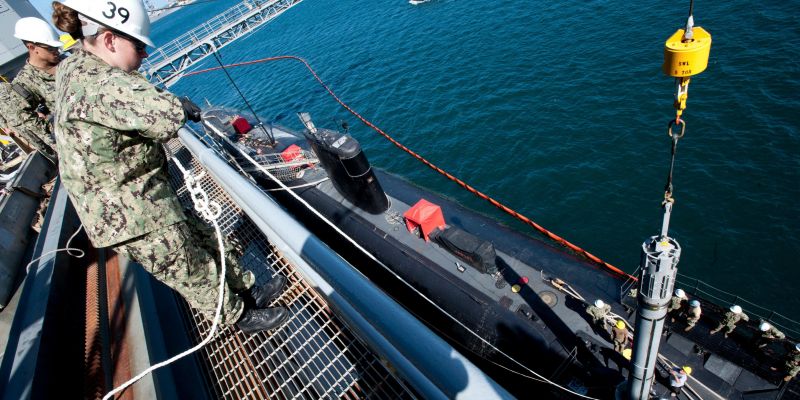


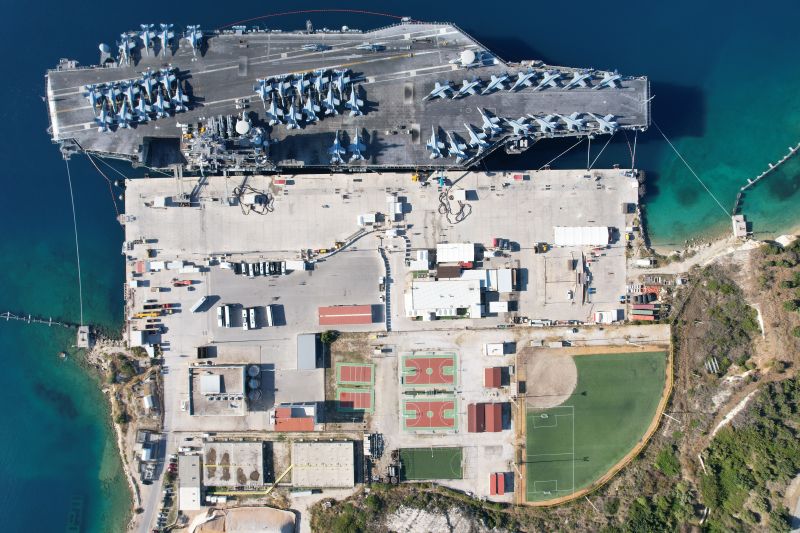

 RalF !
RalF !
 Верный союзник с Окинавы
Верный союзник с Окинавы
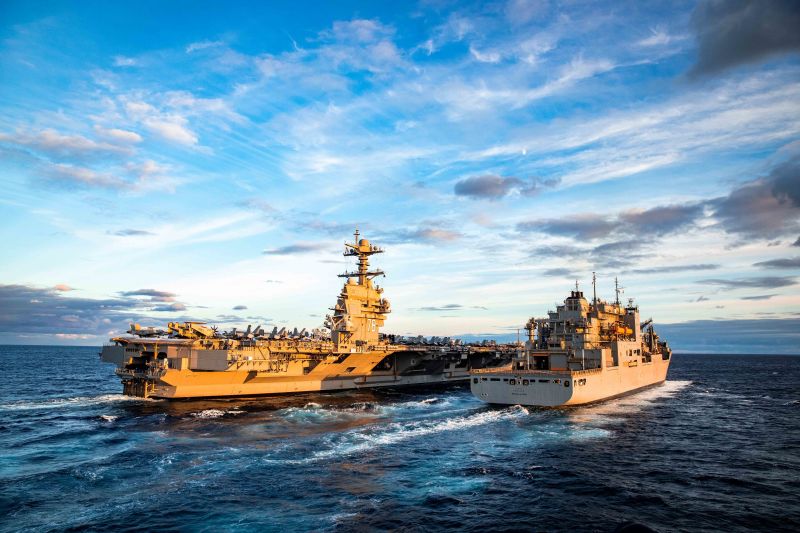







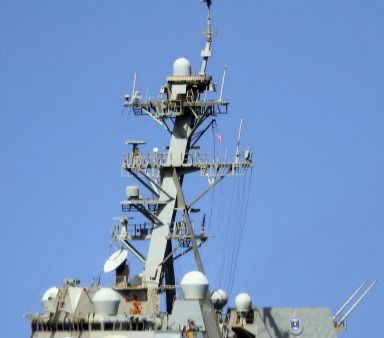



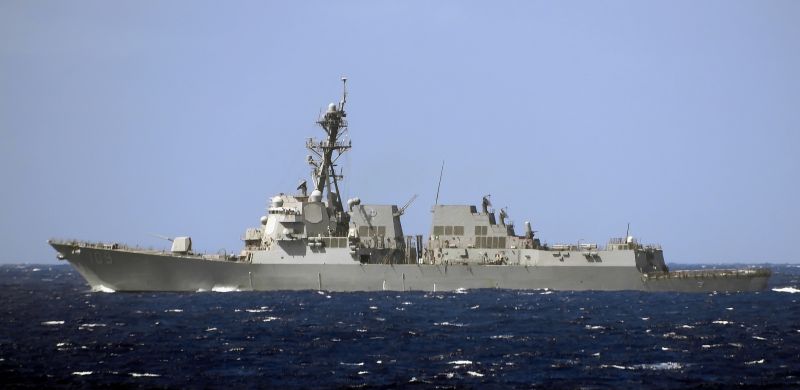
 RalF !
RalF !







